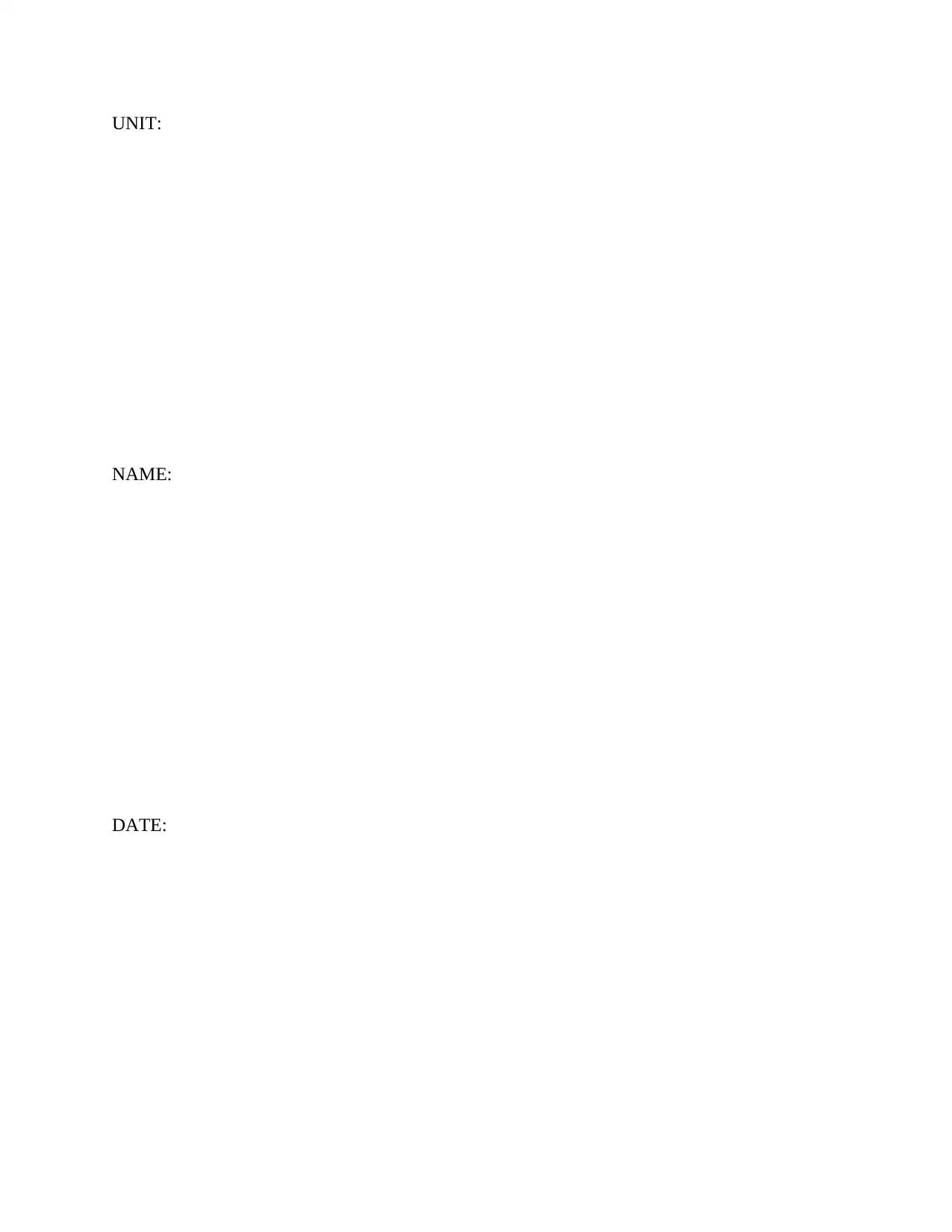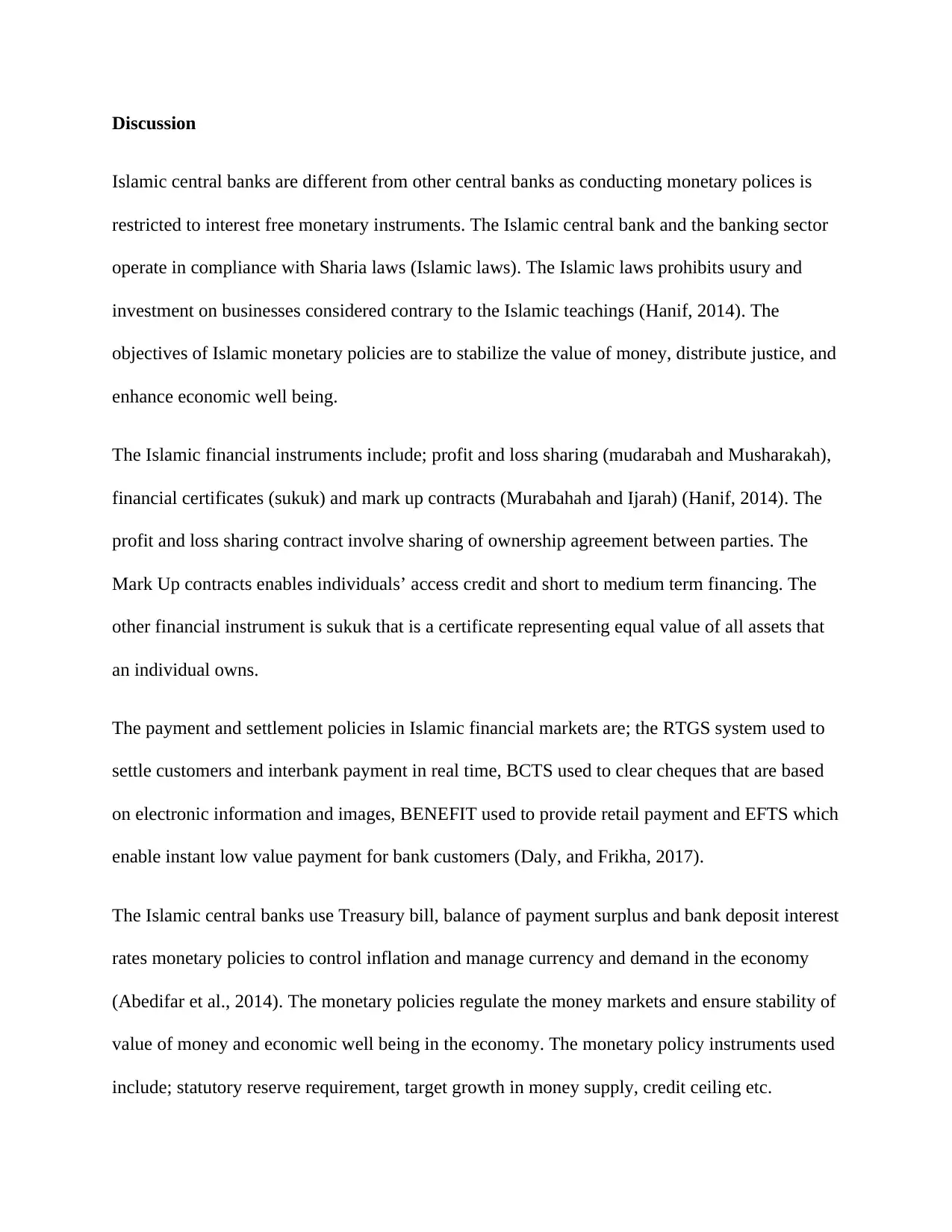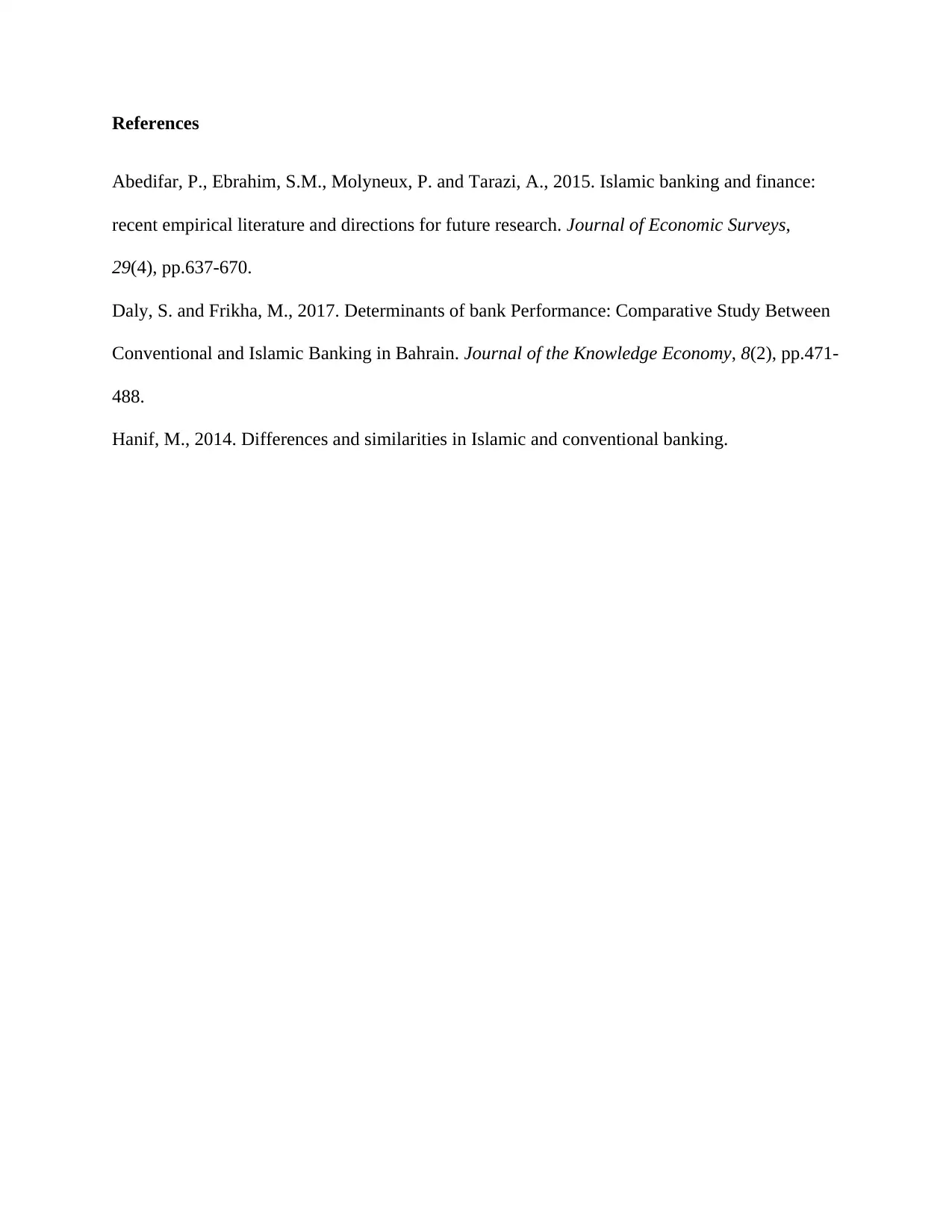Islamic Central Banks: Comparison of Monetary Policies and Instruments
VerifiedAdded on 2020/05/04
|3
|422
|280
Discussion Board Post
AI Summary
This assignment examines the operational differences between Islamic and conventional central banks, highlighting the significance of Sharia law in shaping monetary policies. It explores the use of interest-free monetary instruments, such as profit and loss sharing (Mudarabah and Musharakah), financial certificates (Sukuk), and mark-up contracts (Murabahah and Ijarah), to achieve economic stability and justice. The discussion further covers the payment and settlement policies within Islamic financial markets, including the RTGS system, and other electronic payment methods. Additionally, it analyzes the monetary policy instruments employed by Islamic central banks to manage inflation, control currency, and regulate money markets, with references to relevant academic literature.
1 out of 3










![[object Object]](/_next/static/media/star-bottom.7253800d.svg)